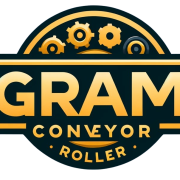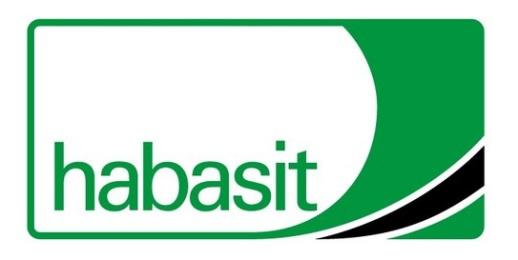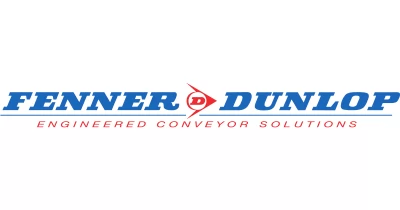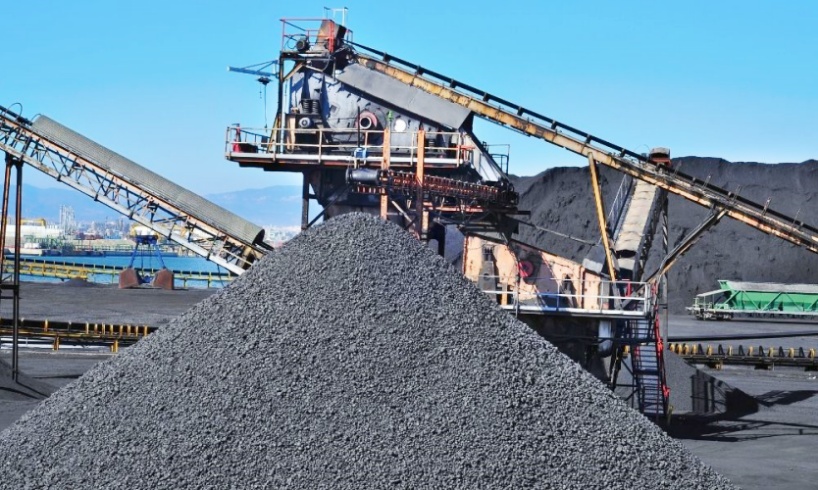North America Conveyor Belt Market Size, Share & Growth Outlook
The North America Conveyor Belt market stands as a pivotal component in the industrial landscape, driven by a blend of technological innovation and an escalating need for efficient material handling solutions. Discover the future trends and growth outlook of the North America Conveyor Belt Market, with notable expansions in size and share by 2028. This market, encompassing a diverse range of conveyor belt types and applications, plays a crucial role across various sectors, including manufacturing, mining, logistics, and more. The growth trajectory of this market is marked by a consistent rise, fueled by advancements in conveyor technology and a growing emphasis on automation and operational efficiency in material handling processes. Different sectors demand specific type of conveyor belt material to ensure optimal performance and durability, further influencing market dynamics. This introduction sets the stage for an in-depth exploration of the market’s nuances, trends, and future prospects.
North America Conveyor Belt Market Overview and Growth Trends
The North America Conveyor Belt market, valued at US$ 1.6 Billion in 2022, is projected to reach US$ 2.1 Billion by 2028, exhibiting a CAGR of 4.2% during the forecast period. This significant growth is underpinned by several key factors:
- Rise in Manufacturing Activities: The resurgence of manufacturing industries, especially post-pandemic, has led to increased demand for conveyor belts to streamline production and logistics operations.
- Expansion of Airports: With the expansion and modernization of airports in North America, there’s a growing need for efficient baggage handling systems, directly boosting the conveyor belt market.
- Growth of Retail and E-commerce: The e-commerce boom, coupled with the need for efficient warehousing and distribution systems, has propelled the demand for advanced conveyor belt solutions.
- Technological Advancements: Innovations in conveyor belt design, such as IoT integration and automation, have enhanced the efficiency and functionality of these systems, making them more appealing across various industries. For those interested in learning more about these advancements, a comprehensive conveyor belt design book can provide detailed insights and technical knowledge.
- Sustainability and Safety Concerns: There’s an increasing focus on eco-friendly and safe conveyor solutions, which is influencing market dynamics.
The market’s growth is also influenced by regional economic developments, trade policies, and the evolving industrial landscape in North America. The adoption of conveyor belts in emerging sectors, along with upgrades in existing systems, presents a fertile ground for market expansion.

North America Conveyor Belt Market Segmentation
The North America Conveyor Belt market is segmented into various categories, each contributing uniquely to the market’s growth:
- By Product Type:
- Medium-Weight Conveyor Belt: Widely used in various industries for moderate-duty applications.
- Light-Weight Conveyor Belt: Preferred in sectors like food and beverage, where precision and light material handling are crucial.
- Heavy-Weight Conveyor Belt: Dominant in mining and heavy-duty industrial applications.
- By End-Use:
- Mining and Metallurgy: A significant segment due to the extensive use of conveyor belts in mineral extraction and processing.
- Manufacturing: Conveyor belts are integral to manufacturing operations, aiding in the seamless movement of goods.
- Chemicals, Oils and Gases: These industries require specialized conveyor belts resistant to chemicals and harsh conditions.
- Aviation: For baggage handling systems, a sector that demands high reliability and efficiency.
- Others: Including agriculture, logistics, and retail, each with specific conveyor belt requirements.
- Regional Analysis:
- United States: The largest market, driven by advanced manufacturing and logistics infrastructure.
- Canada: A growing market, with emphasis on mining and resource-based industries.
- Mexico: An emerging market, benefiting from manufacturing growth and trade dynamics.
Each segment’s market share and growth potential are shaped by industry-specific needs, technological advancements, and regional economic factors. The United States, with its robust industrial base and technological prowess, leads the market, while Canada and Mexico present opportunities for expansion, driven by their unique industrial landscapes.
Impact of Technological Advancements on the North America Conveyor Belt Market

Introduction to Technological Advancements
The North America conveyor belt market is undergoing a significant transformation, driven by technological advancements. These innovations are not only enhancing the efficiency and productivity of conveyor systems but also revolutionizing the way materials are handled in various industries. This section explores how cutting-edge technologies are shaping the market and providing competitive advantages to businesses that adopt them.
Smart Conveyor Belts
- Integration of IoT: The incorporation of the Internet of Things (IoT) into conveyor systems allows for real-time monitoring and data analysis. This technology enables predictive maintenance, reducing downtime and extending the lifespan of conveyor belts.
- Case Study: An example is Rio Tinto that implemented IoT-enabled conveyor belts, resulting in a 30% reduction in maintenance costs and a significant decrease in unplanned downtime.
Automated and Robotic Systems
- Robotics in Material Handling: Advanced robotics technology is being used to automate loading and unloading processes. This automation increases precision and speed, leading to higher productivity.
- Example: Amazon’s distribution center employed robotic systems and reported a 25% increase in material handling efficiency, showcasing the impact of automation on operational throughput.
Eco-friendly and Sustainable Solutions
- Green Conveyors: The shift towards sustainability has led to the development of eco-friendly conveyor belts. These belts are made from recycled materials and are designed to be energy-efficient.
- Impact: A case study of Toyota’s manufacturing facility that switched to green conveyor belts showed a 20% reduction in energy consumption, highlighting the environmental and cost-saving benefits.
Advanced Materials and Design
- High-Performance Materials: The use of advanced materials like reinforced polymers and high-grade rubbers has improved the durability and performance of conveyor belts.
- Innovative Design: The introduction of belts with improved grip, reduced weight, and increased flexibility has enhanced the versatility of conveyor systems.
Technological advancements are playing a pivotal role in shaping the North America conveyor belt market. From IoT and automation to sustainability and advanced materials, these innovations are setting new standards in efficiency, productivity, and environmental responsibility.
Leading Conveyor Belt Manufacturers in North America Conveyor Belt Market
Overview of Major Manufacturers
The USA is home to some of the world’s leading conveyor belt manufacturers, each contributing significantly to the North America conveyor belt market. These industrial conveyor belt manufacturers are known for their innovation, quality, and service, and they play a crucial role in the market’s growth and development.
Key Players in the Market
- Gram Conveyor:

As an excellent conveyor roller supplier and conveyor belt manufacturer, Our products mainly include the following three types: conveyor roller, a wide variety of conveyor belt, and different types of conveyor accessories/conveyor parts.
- Flexco:

Known for its high-quality, durable conveyor belts, this company has a strong focus on R&D, leading to innovative product offerings.
- Habasit America:

Specializes in customized conveyor solutions, catering to specific industry needs. Their bespoke designs have earned them a reputation for flexibility and customer-centric services.
- Fenner Dunlop:

Focuses on eco-friendly and sustainable conveyor belts, appealing to environmentally conscious businesses.
Competitive Landscape
- Market Strategies: Leading companies employ various strategies to maintain their market position, including mergers and acquisitions, partnerships, and global expansion.
- Innovation and Technology: A key differentiator in the market is the ability to innovate. Companies invest heavily in research and development to bring new technologies and materials to their conveyor belt products.
- Customer Relationships: Building strong relationships with clients through exceptional service and support is another strategy for maintaining market dominance.
Case Studies
- Case Study 1: Flexco introduced a revolutionary material in their conveyor belts, resulting in a 40% increase in belt lifespan, significantly impacting the market.
- Case Study 2: Habasit America successfully expanded its operations into emerging markets, increasing its global footprint and market share.
The conveyor belt manufacturers in North America conveyor belt market are pivotal to the growth and evolution of the North America conveyor belt market. Their commitment to innovation, quality, and customer service has positioned them as leaders in this competitive landscape. As the market continues to evolve, these manufacturers are expected to play a key role in shaping its future direction.
Conveyor Belt Market Price Analysis in the North America Conveyor Belt Market
The North America Conveyor Belt Market is a dynamic and evolving landscape, where pricing trends are influenced by a myriad of factors. Understanding these trends is crucial for businesses operating in this space, as it directly impacts their procurement strategies, competitive positioning, and overall profitability.
Material Costs:
The raw materials used in conveyor belt manufacturing, such as rubber, polymers, and metals, are subject to price fluctuations based on global supply and demand dynamics. For instance, the cost of natural rubber can vary significantly due to changes in weather conditions affecting rubber plantations, geopolitical tensions in rubber-producing countries, or shifts in automotive industry demand, which also heavily relies on rubber. Similarly, the prices of synthetic materials and metals used in conveyor belts can fluctuate based on oil prices, mining output, and global trade policies.
Manufacturing Processes:
The manufacturing process of conveyor belts involves several stages, including calendering, laminating, and vulcanization. Each of these processes requires specific machinery, labor, and energy. Technological advancements have led to more efficient manufacturing processes, potentially reducing costs. However, investments in such technologies can be substantial. Additionally, labor costs can vary significantly from one region to another, impacting the overall manufacturing costs.
Market Demand:
The demand for conveyor belts is closely tied to the overall economic health of key industries such as mining, manufacturing, and logistics. For instance, a boom in e-commerce often translates into increased demand for conveyor systems in warehouses and distribution centers, driving up the price of conveyor belts. Conversely, a downturn in the mining industry might lead to reduced demand and, consequently, lower prices.
Regulatory and Environmental Considerations:
Regulations related to environmental protection and worker safety can also impact the cost of conveyor belts. For instance, regulations requiring the use of low-emission materials or safer design features can lead to increased production costs. However, these additional costs are often offset by the long-term benefits of compliance, such as reduced environmental impact, improved worker safety, and avoidance of regulatory fines.
Competition and Market Positioning:
The competitive landscape in the North America Conveyor Belt Market also plays a crucial role in pricing. Manufacturers might adjust their pricing strategies based on the actions of their competitors, the introduction of new products, or changes in customer preferences. Companies that position their products as premium, offering advanced features or superior performance, might command higher prices.
The pricing trends in the North America Conveyor Belt Market are the result of a complex interplay of material costs, manufacturing processes, market demand, regulatory considerations, and competitive dynamics. Businesses operating in this market must stay informed about these factors and adapt their strategies accordingly to navigate the market successfully.
The Future of Conveyor Systems in the North America Conveyor Belt Market

The North America Conveyor Belt Market is on the cusp of a new era, shaped by advancements in technology, shifts in industrial practices, and evolving market demands. The future of conveyor systems in this region is expected to be marked by several key trends:
Automation and Smart Technologies:
The integration of automation and smart technologies is set to redefine the operational efficiency of conveyor systems. The use of sensors, IoT devices, and AI can lead to predictive maintenance, real-time monitoring, and automated troubleshooting, minimizing downtime and reducing operational costs. Furthermore, automated sorting and picking systems integrated with conveyor belts can significantly enhance the throughput and accuracy in warehouses and distribution centers.
Sustainability and Eco-friendly Materials:
Sustainability is becoming a central consideration in the manufacturing and operation of conveyor systems. Eco-friendly materials that reduce environmental impact without compromising on durability and performance are increasingly in demand. Additionally, energy-efficient designs and practices, such as the use of solar-powered conveyor systems or regenerative braking systems that recover energy, are expected to gain traction.
Advancements in Material Science:
The development of new materials with enhanced properties can lead to conveyor belts that are stronger, lighter, and more adaptable to various environmental conditions. For instance, the use of reinforced polymers or advanced composites can result in conveyor belts that are more resistant to wear and tear, reducing the need for frequent replacements and maintenance.
Challenges and Opportunities:
While the future holds promising prospects for the North America Conveyor Belt Market, it also presents challenges. Rapid technological advancements require continuous investment in R&D and workforce training. Companies must navigate a regulatory landscape that is increasingly focused on sustainability and worker safety. However, these challenges also present opportunities for innovation, differentiation, and growth. Businesses that can anticipate market trends, invest in technological advancements, and adapt to changing regulatory requirements will be well-positioned to thrive in the future market landscape.
The North America Conveyor Belt Market is poised for transformation, driven by technological innovation, sustainability initiatives, and material science advancements. While challenges exist, the opportunities for growth and innovation are abundant for businesses ready to embrace the future trends and adapt to the evolving market dynamics.
Your source for top conveyor belts – contact us now!
FAQs about North America Conveyor Belt Market
The global conveyor market is substantial and continues to grow steadily. As of my last update in April 2023, specific market size figures may vary depending on the source and the year of the report. However, the market is driven by factors such as the increasing automation in various industrial sectors, advancements in conveyor technology, and the rising demand in industries like e-commerce, mining, and automotive. The market encompasses different types of conveyors, including roller, belt, and overhead conveyors, each serving various applications across multiple industries.
Some of the biggest conveyor belt manufacturers globally include:
Bridgestone Corporation: A leading provider known for its durable and high-quality conveyor belts.
Continental AG: Renowned for innovative and efficient conveyor belt solutions.
Fenner Group Holdings Ltd: Specializes in reinforced polymer technology with applications in conveyor belts.
Intralox: Offers comprehensive conveyance solutions and services.
The Yokohama Rubber Co., Ltd: Known for high-quality materials and advanced manufacturing technology. These companies are recognized for their extensive research and development, wide range of products, and global presence.
Conveyor belts are used by a wide range of industries, including:
Mining and Metallurgy: For transporting minerals and metals.
Manufacturing: In assembly lines and production processes.
Agriculture: For handling grains and other produce.
Airports: For baggage handling systems.
Retail and Distribution: In warehousing and logistics for moving goods.
Food and Beverage: For processing and packaging.
Pharmaceuticals: In product handling and packaging lines. These industries rely on conveyor belts for efficient, automated transport of materials and products.
As of my last update, the size of the conveyor belt market in India was experiencing growth, driven by the country’s expanding industrial sector. India’s market is influenced by factors such as increasing automation in industries, infrastructural developments, and the rising demand in sectors like mining, steel, and cement. The market size can be quantified in terms of value, but specific figures would require access to the latest market research reports. The Indian conveyor belt market is also characterized by the presence of both local manufacturers and international players, contributing to a competitive and diverse market landscape.
1. Integration of Advanced Technologies:
Internet of Things (IoT): The future of conveyor belts will see increased integration of IoT, enabling real-time monitoring, predictive maintenance, and data-driven decision-making. This will enhance operational efficiency and reduce downtime.
Automation and Robotics: The use of automated and robotic systems in conveyor operations will continue to grow, increasing precision, speed, and productivity in material handling processes.
2. Sustainability and Eco-Friendliness:
Green Materials: There will be a significant shift towards using eco-friendly and sustainable materials in conveyor belt manufacturing. Companies will focus on reducing their carbon footprint by using recycled materials and designing energy-efficient conveyor systems.
Energy Efficiency: Future conveyor belts will be designed to consume less energy, contributing to cost savings and environmental sustainability.
3. Advanced Materials and Design:
High-Performance Materials: The development of new materials such as reinforced polymers, high-grade rubbers, and other advanced composites will enhance the durability, flexibility, and performance of conveyor belts.
Innovative Designs: Conveyor belts with improved grip, reduced weight, and increased flexibility will become more common, allowing for greater versatility in various industrial applications.
4. Market Growth and Expansion:
Emerging Markets: The conveyor belt market is expected to expand into emerging markets, driven by industrialization and infrastructure development.
Customization: There will be a growing demand for customized conveyor solutions tailored to specific industry needs, driving innovation and development in the market.
5. Enhanced Safety and Efficiency:
Safety Features: Future conveyor belts will incorporate advanced safety features to prevent accidents and ensure the well-being of workers.
Efficiency Improvements: Continuous improvements in the design and technology of conveyor belts will lead to increased operational efficiency and reduced maintenance costs.
The average price of a conveyor belt can vary significantly based on several factors, including the type of belt, its material, dimensions, and the specific requirements of the application. Here are some general price ranges:
1. Light-Duty Conveyor Belts:
Material: PVC, PU, or rubber.
Price Range: $10 to $50 per meter.
2. Medium-Duty Conveyor Belts:
Material: Reinforced rubber, nylon, or polyester.
Price Range: $50 to $150 per meter.
3. Heavy-Duty Conveyor Belts:
Material: Steel cord, high-tension synthetic materials.
Price Range: $150 to $500 per meter.
4. Specialized Conveyor Belts:
Types: Heat-resistant, oil-resistant, flame-retardant, or other specialized types.
Price Range: $200 to $1,000+ per meter, depending on the specifications and required properties.
It’s important to note that these prices are approximate and can vary based on market conditions, supplier pricing, and specific project requirements. For precise pricing, it is recommended to request quotes from multiple suppliers based on the detailed specifications of the conveyor belt needed.
Last Updated on June 21, 2024 by Jordan Smith
Jordan Smith, a seasoned professional with over 20 years of experience in the conveyor system industry. Jordan’s expertise lies in providing comprehensive solutions for conveyor rollers, belts, and accessories, catering to a wide range of industrial needs. From initial design and configuration to installation and meticulous troubleshooting, Jordan is adept at handling all aspects of conveyor system management. Whether you’re looking to upgrade your production line with efficient conveyor belts, require custom conveyor rollers for specific operations, or need expert advice on selecting the right conveyor accessories for your facility, Jordan is your reliable consultant. For any inquiries or assistance with conveyor system optimization, Jordan is available to share his wealth of knowledge and experience. Feel free to reach out at any time for professional guidance on all matters related to conveyor rollers, belts, and accessories.





